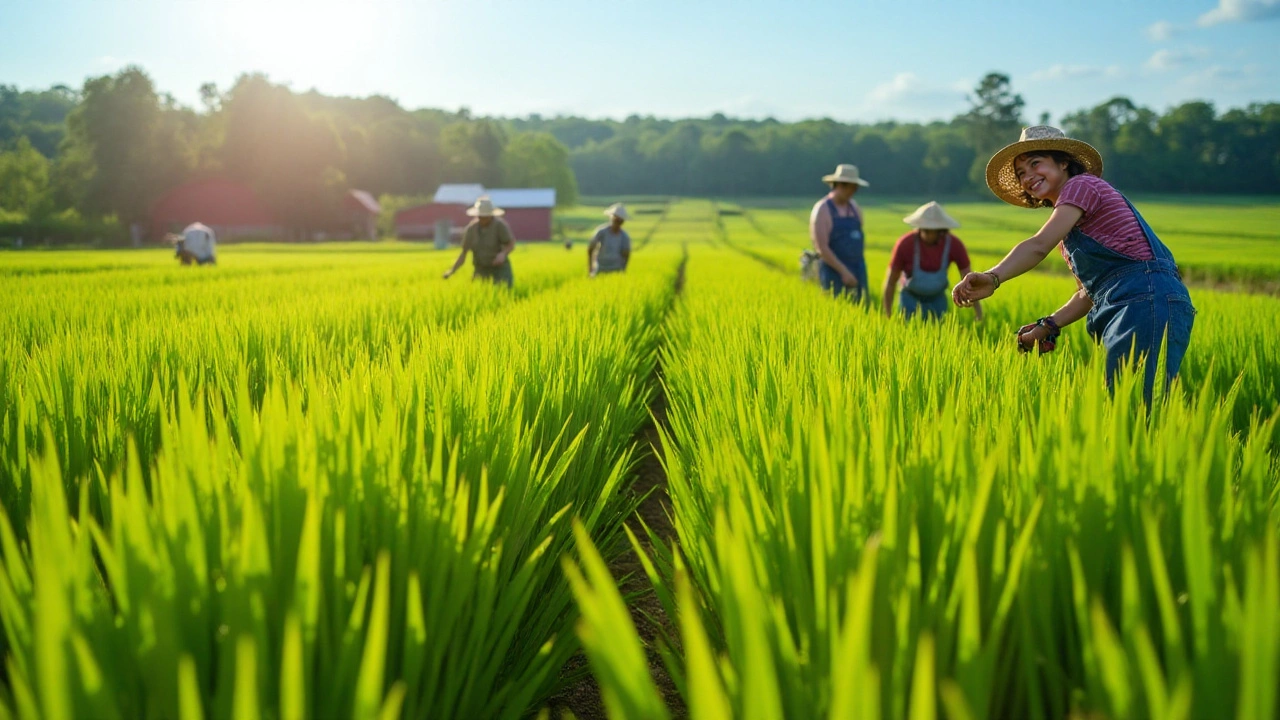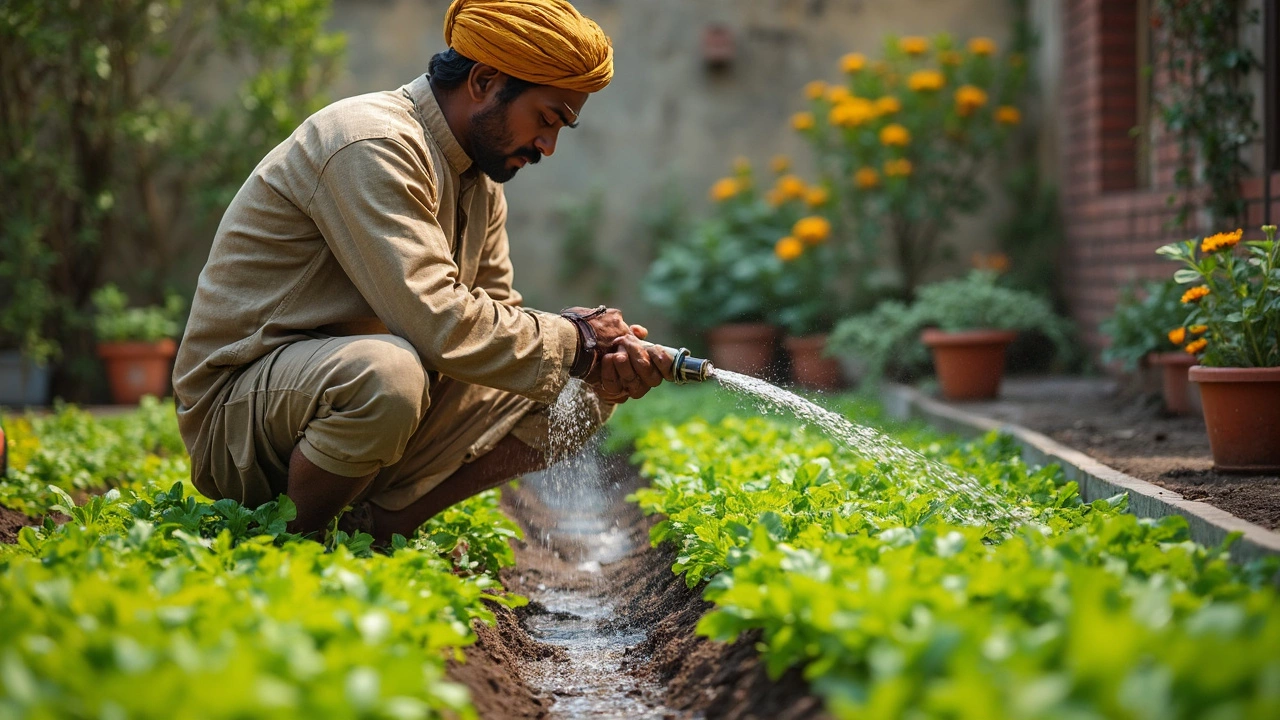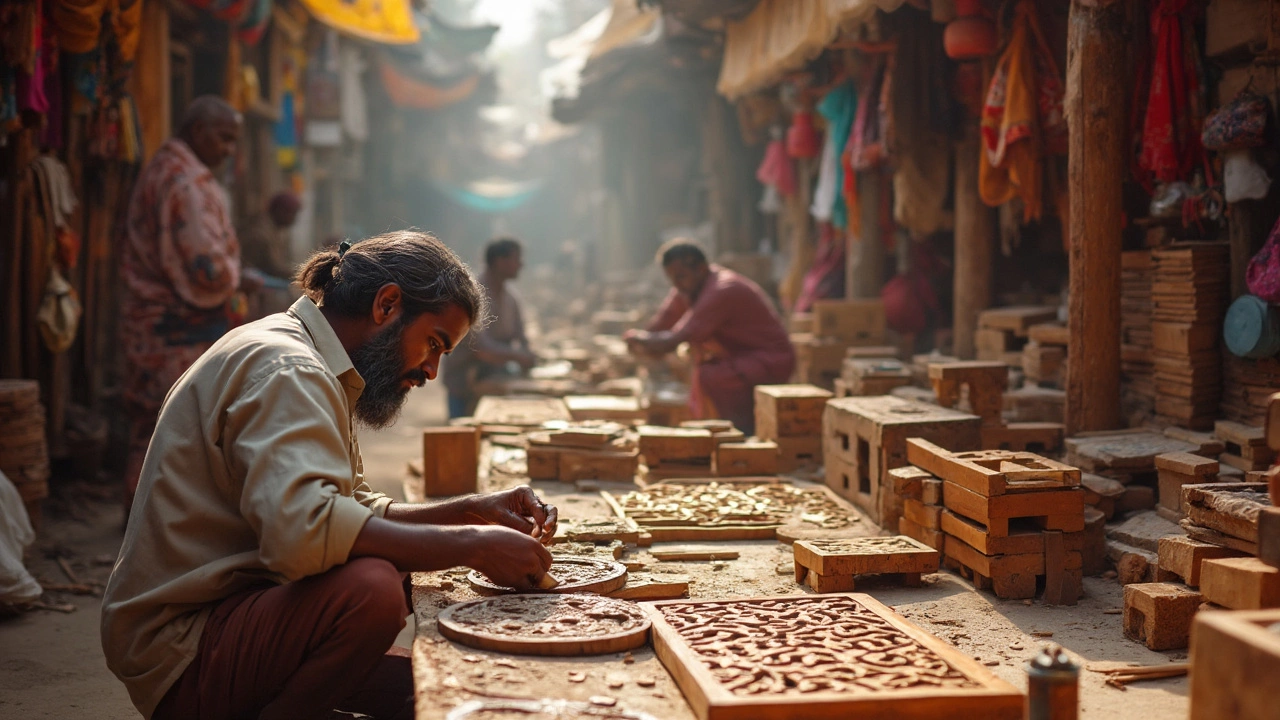Best Season for Planting in India: Your Guide to Seasonal Plants
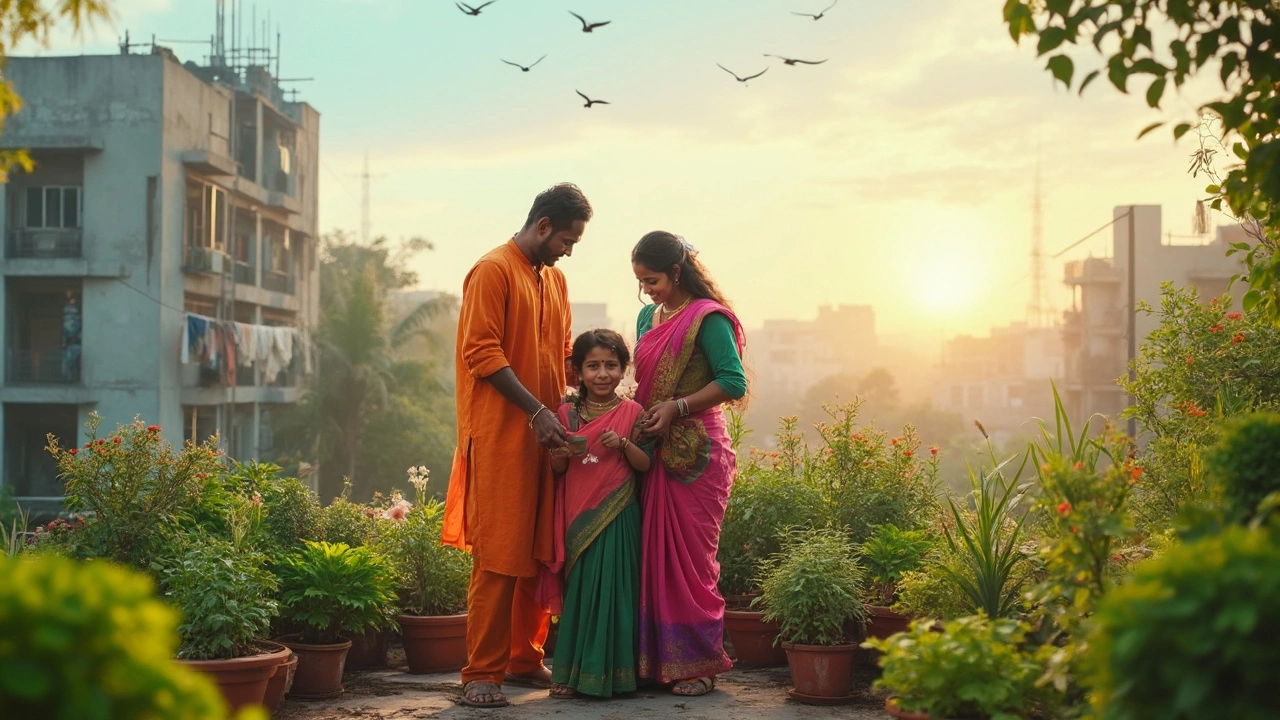
Want healthy plants that don’t just survive but thrive? Timing matters way more than you’d think, especially in India where seasons actually make or break your garden. The country juggles tropical heat, unpredictable monsoons, chilly winters, and dry spells, all in one year. If you plant the wrong thing at the wrong time, you’ll fight an uphill battle—watering all day or watching plants wither no matter what you do.
Seriously, most problems people face with their gardens come down to planting at the wrong season. You could have perfect soil, good seedlings, and loads of enthusiasm—but if you ignore the weather, things just won’t click. The answer? Sync your planting plans with the rhythm of Indian seasons. Get this right, and you’ll see seeds sprout faster, blooms pop brighter, and veggies taste better—with a whole lot less hassle. Ready to figure out what grows best, when? Let’s break it down and make gardening work for you, no matter where you live in India.
- Why Seasons Matter for Indian Gardens
- Monsoon Magic: Lovin’ the Rains
- Winter Wonders: Cool Crops and Flowers
- Summer Strategies: Beating the Heat
- Things You Didn’t Know About Timing
- Common Planting Mistakes to Dodge
Why Seasons Matter for Indian Gardens
Ask any good gardener in India and they’ll tell you—season is everything. If you get the timing wrong, even the best seeds or soil won’t help. India has four main seasons: summer, monsoon, post-monsoon (autumn), and winter. Each comes with its own set of challenges and benefits. North and South India don’t even follow the same growing calendar, thanks to the difference in climate zones and rainfall patterns.
The weather here can switch from scorching sun to heavy rain overnight. This swing isn’t just annoying for people—it really messes with your plants too. For example, tomatoes and most leafy greens love the mild temps during early winter, while things like rice and okra thrive only if the rains come on time. Missing the right window means slower growth or no crop at all.
Have a look at how different seasons stack up for major planting activities:
| Season | Months | Ideal Plants | Main Challenge |
|---|---|---|---|
| Summer | March–June | Sunflowers, chillies, gourds | Heat stress and water shortage |
| Monsoon | June–September | Rice, okra, cucumbers | Too much water, fungal issues |
| Post-monsoon | October–November | Spinach, carrots, beans | Unpredictable showers |
| Winter | December–February | Peas, broccoli, cauliflower | Frost in the far North |
This is why checking your region’s local climate is huge. For example, gardeners in Kerala might sow rice in June, while their pals in Rajasthan might start with chillies or brinjals only when the extreme heat calms down. If you’re ever confused, always check what the locals are planting—chances are, they’ve figured out the planting season India puzzle for their area years ago.
Most importantly, seasons affect all the basics: how fast seeds germinate, how much you water, and which bugs you’ll battle. Timing also impacts your harvest quantity and quality. Stay in sync with nature and your garden will reward you, no sweat.
Monsoon Magic: Lovin’ the Rains
Everyone knows – when the monsoon clouds roll in, it’s go time for Indian gardeners. The monsoon runs from June to September and drops over 75% of India’s yearly rainfall. This is basically free irrigation for your garden. If you want to grow strong roots and lush leaves, this is the best time to plant.
Most crops and flowers actually count on the rains to start off right. You’ll see farmers out in full swing sowing rice, but it’s not just for big farms. Home gardeners can totally cash in, too. Monsoon season is perfect for growing veggies like:
- Okra (bhindi)
- Chilies
- Pumpkin
- Beans
- Bitter gourd (karela)
And flowers? Well, think marigold, sunflowers, zinnia, and balsam. These plants love the daily showers and humidity.
Just want to see the rains boost your results? Here’s how to make the most of the monsoon:
- Rain sometimes means too much water. Make sure your pots or beds have good drainage—nobody wants root rot.
- Monsoon also brings pests. Keep an eye out for slugs and snails—they go wild in the wet. A sprinkle of crushed eggshells or neem powder around plants helps a lot.
- Don’t toss seeds everywhere. Space your seeds or seedlings, so they don’t crowd each other as they take off.
- Try a basic mulch cover (think dried leaves, grass). It keeps weeds out and the soil temp steady.
Want some quick numbers? Here’s what the monsoon means for planting in different Indian regions:
| Region | Avg. Monsoon Rainfall (mm) | Best Monsoon Crops |
|---|---|---|
| North India | 800-1200 | Maize, soybean, bottle gourd |
| South India | 650-2500 | Rice, chilli, amaranthus |
| West India | 1000-3000 | Groundnut, pearl millet, okra |
| East India | 1200-2500 | Jute, rice, colocasia |
The short version? The monsoon season is a straight-up win for planting in most parts of India. Line up your seeds, take care of the drainage, and let the rains do the heavy lifting.
Winter Wonders: Cool Crops and Flowers
When winter rolls in—think November to mid-February—gardeners across India get excited. The cool, dry months are perfect for growing crops and flowers that just hate too much heat or rain. Even in most places where it doesn't get super cold, you can plant a lot more than you’d expect. In fact, winter is when you get your biggest variety in gardens, especially up north and in central India.
Let’s get practical: classic winter crops here include carrots, spinach, radish, peas, cabbage, lettuce, beets, and broccoli. These veggies love the cooler air. You’ll notice that your plants look greener, grow crispier, and the flavor’s just sharper. Many kitchen gardeners swear their spinach in January is ten times better than in June. Flowers get showy too—marigold, petunia, calendula, pansy, phlox, and sweet pea take center stage. These need the chill to give you their best blooms.
Dr. Priti Kumar, a senior horticulturist at IARI Delhi, puts it simply: "In India, winter is like a free pass for anyone who wants a lush garden. Most bugs and plant diseases drop off in the cold, so you don’t have to work as hard."
Here’s an easy checklist for the planting season India fans out there wanting to ace their winter planting game:
- Start your seeds in trays or small pots by late October or early November.
- Keep soil moist but not soggy—winter roots rot fast if you overwater.
- Pick sunny spots—days are shorter and sunlight is weaker in winter.
- If you live where it gets really cold (like in Himachal or Uttarakhand), use old sheets or plastic at night to guard against frost.
- Deadhead old flowers regularly to keep new blooms coming.
Don’t waste this season. Even if your space is small, try growing herbs like coriander and dill—they’re basically foolproof in winter. Also, don’t panic if growth is a little slower than in spring or the rains. Cool weather just means steady, solid growth instead of crazy speed. Your salads, soups, and vases will thank you.
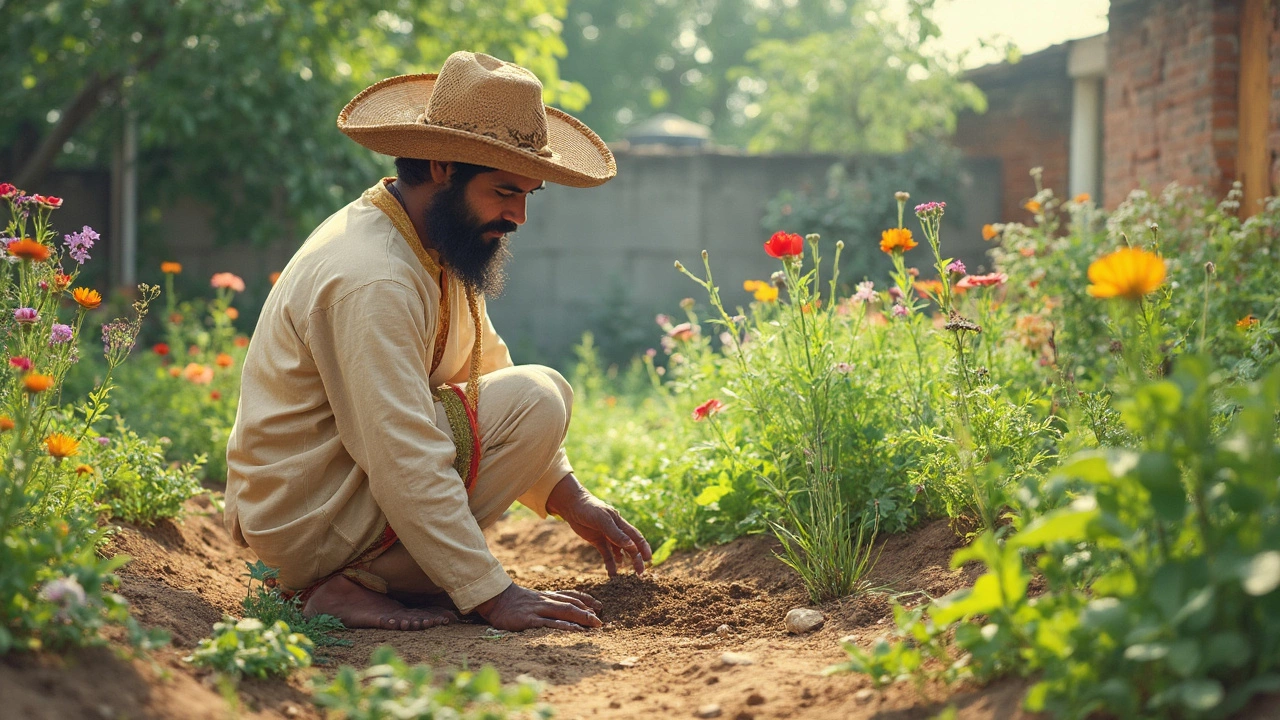
Summer Strategies: Beating the Heat
Summer in India is tough on plants—the heat can hit 40°C in June, sometimes even higher in the north and central parts. The soil dries out fast, and many plants, especially newbies, struggle to survive. But here’s some good news: with a smart approach, your garden doesn’t have to go on vacation till the monsoon shows up.
If you’re serious about gardening in summer, timing matters. Most experts suggest planting just before summer starts heating up in late February or March. This way, young plants settle in before the hottest days hit. For anyone in southern India, where the heat rolls in early and humidity stays high, plan even earlier.
Pick the right plants. Some veggies like okra (bhindi), cowpea (lobia), amaranthus (chaulai), cucumber, and cluster beans (guar) actually love the heat and produce well even when other crops sulk. For flowers, go for portulaca, zinnia, gomphrena, and sunflowers—they’ll bloom brightly despite hot weather.
Shade is your best friend. You can use green nets, old saris, or mesh to throw some shade over delicate plants during peak afternoons. Mulching is a game changer—spread a layer of dried leaves, straw, or even cardboard around the base of your plants. This keeps soil cool and traps moisture longer, helping reduce how often you need to water.
Watering smartly is everything. Always water in the early morning or late evening. Midday watering just leads to too much evaporation. And don’t flood the soil—a deep soak every two days works better than a little sprinkling every day.
For balcony or terrace gardens, choose bigger pots for your planting season India picks; they hold moisture better and shield roots from temperature swings. Always check pots—dark-colored plastic ones heat up like crazy and can scorch roots. Terracotta pots stay a bit cooler.
- Plant hardy, sun-loving veggies and flowers.
- Mulch everything you can.
- Give shade to saplings or delicate plants.
- Water early morning or late evening, not noon.
- Choose pot materials that stay cooler.
Small stuff like moving pots under a tree or setting up a basic shade net can save your plants. Don’t be afraid to experiment—every garden, even on the same street, reacts a little differently. Stay observant, and you’ll figure out tricks that work best for your patch.
Things You Didn’t Know About Timing
It’s tempting to plant as soon as you get a new packet of seeds. But in India, timing isn’t just about months on a calendar—it’s about matching your planting with wild swings in temperature, humidity, and rainfall. Even a few weeks can make or break your results.
Here’s something surprising: Some crops are crazy-sensitive to day length. That’s why onions and certain flowers simply won’t bulb or bloom if you plant them at the wrong time. Indian agriculture research centers have published tables on which week of which month is best for each veggie. Try ignoring it, and you’ll end up with sad, scrawny harvests.
"The best time for sowing is not just about the right season, but also choosing the perfect week within that season. A two-week delay can chop yields by nearly 30%."
— Indian Institute of Horticultural Research
Your garden also feels the after-effects of changing climate patterns. Summers in the plains are starting earlier, monsoons can come late, and winters in the north swing between harsh and crisp to barely-there. This means your grandfather’s planting charts often need a serious update.
Check out average planting and harvesting times for popular crops and flowers in India:
| Plant | Ideal Sowing Time | Harvest Window |
|---|---|---|
| Tomato | Mid-June to Early July | 90-100 days after sowing |
| Marigold | Late June or Mid-October | 8-10 weeks after sowing |
| Spinach | August to November | 25-30 days after sowing |
| Brinjal | January-February or June-July | 120-140 days after sowing |
| Sunflower | January-February or August | 80-100 days after sowing |
Lots of first-timers skip checking the local climate and rainfall patterns and wonder why their garden fails. Here are a couple of practical reminders that absolutely matter:
- Always use the planting season India keyword in your search when checking what to plant—info for different regions varies a lot.
- If you live near the coast, salty winds delay growth even if it’s the “right” season—try hardy plants or use windbreaks.
- Urban spaces heat up faster (urban heat island effect), so you might have to shift your planting dates up by a couple of weeks compared to official charts.
- Soil temperature is key—seeds don’t care if your calendar says “sowing time” if the soil’s still chilly.
Bottom line: Don’t blindly follow old gardening routines. Take weather apps, local WhatsApp gardening groups, and even farm extension bulletins seriously. Your plants will thank you for working with the actual climate, not just the textbook dates.
Common Planting Mistakes to Dodge
Even with the best seeds and a green thumb, skipping the basics can wreck your garden. One of the most common goof-ups in planting season India is not matching the plant to the right season. For example, folks often sow tomatoes or peppers during the blazing Indian summer, but these plants fry out before even flowering. Always check if your seed packet is meant for monsoon, summer, or winter—don’t rely on global “average” timings.
Another biggie is crowding. People cram too many seeds or saplings in one spot, thinking they’ll get more yield. In reality, crowded plants fight for water, sun, and nutrients, leaving you with weak, spindly growth. Stick to the recommended spacing on your seed packet or nursery tag—seriously, those numbers aren’t just a suggestion.
- Wrong Soil Prep: Jumping straight to planting without checking your soil kills results. Heavy clay? Roots suffocate. Too sandy? Water drains too fast. Most vegetables love slightly loamy, well-drained soil, so mix in some compost and loosen it up before planting.
- Ignoring Water Needs: Rainy season? Cut down on watering, or you’ll get rot. Dry spells? Stay regular with morning watering. Most home gardeners either drown their plants in monsoon or starve them in summer—find the middle ground.
- Using Old or Weak Seeds: Expired seeds or those stored in moist spots have embarrassingly low germination rates. Always check the expiry and store seeds in a dry, cool place.
Take a look at this quick table showing how some rookie mistakes impact key plant health markers:
| Mistake | Impact on Plants |
|---|---|
| Planting out of season | Poor sprouting, stunted growth, low yield |
| Crowding plants | Increased disease, thin or leggy plants |
| Poor soil prep | Slow growth, yellowing leaves, weaker roots |
| Wrong watering habits | Root rot, wilting, pest outbreaks |
| Bad seed quality | Low germination, uneven patches |
Don’t ignore local advice—or just copy what you see on YouTube channels from other countries. Indian climate can be brutal to plants that aren’t ready for it. Learn from neighbors, local gardening groups, or even small nursery owners. Dodge these mistakes and you’ll get healthier, happier plants season after season.

